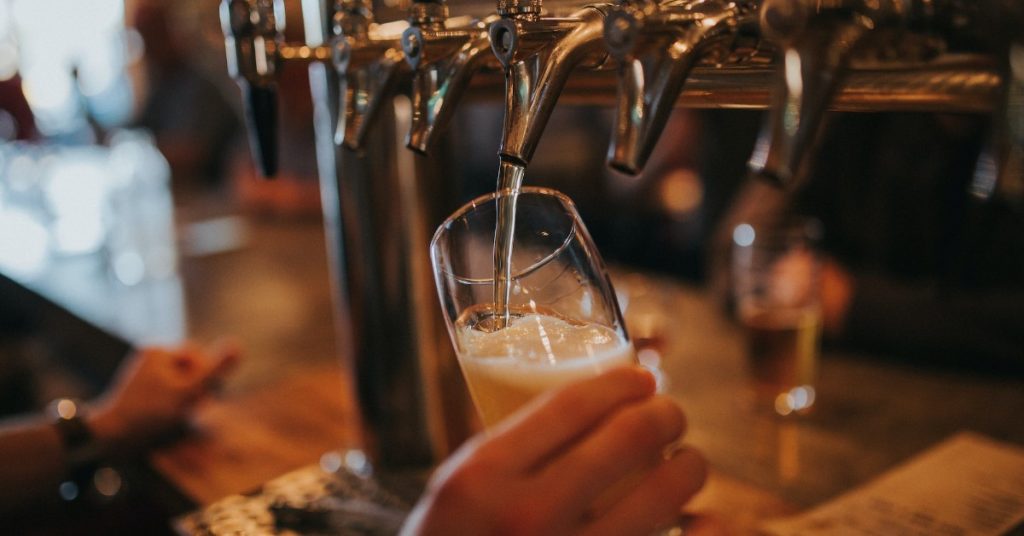
Born of water, barley, and hops, beer has been popular for over 2,000 years. With a bitter-sweet taste and fragrant aroma, beer is often consumed as an aperitif or at the end of dinner. Unfortunately, the beer flavors are often complex, which can overwhelm the senses of your tongue and nose.
If you have ever tried to introduce a child or even an adult to beer, you are surely aware that it takes some time before they can appreciate the bitter-sweet taste and titillating aroma of beer.
Why do people not like beer the first time they try it?
People may not like beer the first time they try it for a few reasons.
- Beer is bitter. Some beers have more bitterness than others, but all of them have some amount of bitterness. Hops make beers taste very hoppy–they’re also known for having lots of bitterness in them. Our genetic makeup predisposes us to like certain tastes over others. We are genetically programmed at a young age to avoid bitter tastes because they have been associated with poisons and other hazards. For example, strong cheeses smell and taste like mold, which we naturally shun for a good reason. Similarly, slimy textures tend to be avoided because they accompany rotting foods that can make us sick.
- Some people dislike beer based on their perceptions of the product. Many people find the beer “dirty” or “low-class.” This image problem is caused by traditional German lager, which should be more appreciated in America. Many people also associate negatively with beer and do not appreciate its qualities. Some Americans view beer as drab, boring, and lacking in sophistication.
- Beer doesn’t have the cachet of wine or whiskey. Beer has not traditionally been as popular among connoisseurs of fine alcoholic beverages as wine or whiskey. However, the recent surge in microbreweries may indicate that alcoholic drinks that are currently less widely accepted may be just as good (if not better) than beer.
- Alcohol content varies widely from drinker to drinker, but generally speaking, there’s quite a bit more alcohol in beer than in soda or juice. This means that if someone isn’t used to drinking much alcohol (or any at all), then sipping on something like Bud Light could be overwhelming at first because consuming too much will likely result in getting drunk quickly.
Why do adults like beer, but kids don’t?
You’re probably thinking, “Why do adults like beer but kids don’t?” Well, several factors contribute to this phenomenon.
- Adults are more likely than kids to drink in social situations where there’s food involved (like at restaurants or parties), so they may be inclined toward beers with food pairings such as pretzels or chips–which would further expand their range of options beyond just regular old Budweiser lager for example.
- Kids have the same taste buds as adults but are less developed and only fully developed in their mid-teens. Kids often won’t like certain foods adults enjoy because their palates have yet to develop. For example, if you don’t like spicy foods now, you will likely never do. Your aversion is based on your personal preferences rather than a lack of ability to taste spiciness. But if your child doesn’t like spicy foods now, they may grow into adults who enjoy them!
- Kids are taught at a young age that alcohol is bad for their health and can have negative effects.
How to acquire the taste of beer?
If you’re new to beer, it can seem overwhelming. This is because there are so many types of beer to choose from, and they all have different tastes and textures.
The first step towards enjoying beer is to learn the different types of beer. Beer has many variations and flavors, which can be categorized by type. However, the most common types of beer are ale, lager, and stout.
Ales are brewed using top-fermenting yeast, producing a fruity flavor profile with high alcohol content (5% – 8%). The color of ales ranges from pale yellow to deep brown. Their taste is often sweet with hints of fruit or caramelized sugar notes. Ales tend to be fuller-bodied than other styles due to higher levels of proteins in their malt bills and higher amounts of hops added during fermentation processes (which give them more bitterness). Ales also tend to have lower carbonation levels than other styles because they use natural carbonation rather than forced carbonation through pressurized kegs or bottles like some other styles do – this gives them less foaminess when poured into glasses.
Lager is a type of beer that’s typically brewed with the use of top-fermenting yeast. Lager beer is known for its pale color and sparkling clarity from fermentation. Lager beer is typically served cold to preserve its flavor and texture, but many lagers can be stored at cellar temperatures for longer periods without losing their flavor.
Lagers typically have an alcohol content ranging from 4% to 6%, although many craft lagers have higher alcohol content. Lagers are characterized by their crisp taste and clean finish and are often light in the body and low in bitterness.
A stout is a dark beer brewed using roasted malts and hops. It typically has an alcohol content of around 4 – 6% and has a dark brown or black color. Stouts are generally made with roasted barley or malt, giving them a distinctive coffee-like flavor. However, they can also be made with wheat, oats, or rye instead of barley, which results in slightly different flavors.
The term “stout” dates back to the late 1800s when it referred to stronger ales brewed by English breweries such as Guinness.
Order something you have never tried before. When you go to a bar, order something you’ve never tried. If you need to know what you are doing and are too afraid of making an error in judgment, ask the bartender for a recommendation. Try something new and different–but don’t be afraid of trying something that sounds weird or unfamiliar. Challenge yourself by trying something else entirely.
Drink beer in moderation. Drinking beer in moderation is the best way to acquire a beer taste. This means that you should drink only a little at a time, and it also means that you should not drink on an empty stomach. However, please drink responsibly and observe the following:
- Don’t drink while driving or operating machinery.
- Don’t drink beer if you are pregnant or breastfeeding.
- If taking any medication, check with your doctor first before consuming alcohol with it.
- Don’t feel pressured to drink beer because it’s “trendy.”
- There are many different types of beer, and you may like one or two types.
- You don’t have to drink beer just because it’s popular.
Ultimately, it’s up to you to decide what kind of beer you like and how much you want to drink. The best way to do this is by trying different types of beer until you find one that suits your taste buds.
Conclusion
Beer is an acquired taste. It’s easy to acquire, but it takes time and patience to appreciate the beer flavor fully. The same goes for other things considered “acquired tastes,” such as coffee, wine, or seafood. While these foods can be very good when prepared properly and paired with the right ingredients, they may need to be more appealing at first glance or when trying them for the first time. That’s why we call them “acquired”–you have to learn how best to enjoy them before they become part of your regular diet.





















Write more, thats all I have to say. Literally, it seems as though you relied on the video to make your point. You definitely know what youre talking about, why waste your intelligence on just posting videos to your site when you could be giving us something enlightening to read?
We are definitely writing more ..